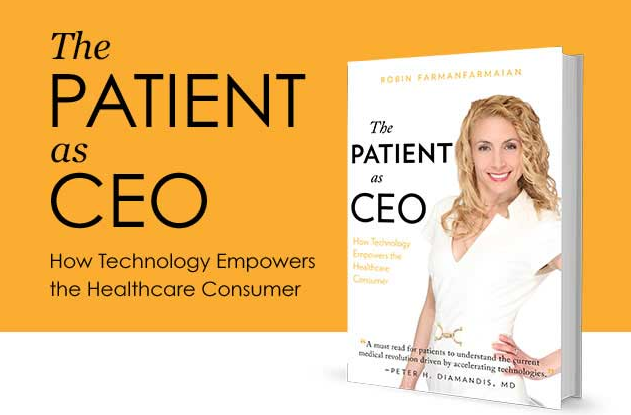In highly regulated industries, such as healthcare, there exists a communications struggle. Consumers, in this case, patients, are demanding authenticity, honesty, and transparency more than ever in marketing and messages received from their care providers. However, it is a thin line for brands to tread with so many privacy concerns at stake.
Medical futurist, author of the best-selling book The Patient as CEO, and professional speaker Robin Farmanfarmaian, argues that the way healthcare brands are seeming to sidestep these concerns, and keep up with the communication revolution, is by putting the patient behind the messaging wheel — meaning using patient influencers to tell aspirational stories — and bringing these stories to life using new immersive technologies such as augmented reality and live social streaming.

“We’re not looking for brands to tell us what to expect of a treatment,” says Robin, “Instead we’re putting our trust in somebody who, let’s say was a Kaiser Permanente patient, and has gone through the same treatment you are about to. Now they have a fun and inspiring life, and they have tips for how to handle and get past what’s ahead. But they’re telling you how Kaiser thought through the little things to make it easier for them along the way. That’s effective healthcare marketing today. The trust is in our perception of our peers’ experiences.”
Robin understands first-hand the power of the visual medium to build an aspirational brand. Having been misdiagnosed with an autoimmune disease at a young age, Robin wrongly suffered forty-three hospitalizations and six major surgeries, and to this day continues to battle with Crohn’s disease. And yet, through the power of visual storytelling Robin has been able to move beyond being a victim, and has cultivated her brand image as an unstoppable force of positive energy.
“When I’m able to share my story visually, I’m not someone complaining about a disease, listing symptoms and struggles for sympathy. I’m not evoking negative emotions. Instead, I share a story of aspirations and inspirations, roadmaps to progress, and give people the hope and the power to do what I have done and continue to do. Seeing and hearing my energy and confidence despite the disease, makes all the difference in the perception of possibility.”
It’s these types of stories that consumers in the social media driven economy crave. Highly personal, and highly real. And when brands can capture, then communicate these stories to their audiences by way of engaging and immersive technologies, that’s when people take notice.
“Why would you follow a brand?” asks Robin. “Or a healthcare company specifically? You wouldn’t. Unless they make it all about interesting people and their lives. People want to follow people.”
The key is to empower people to go live through the brand hub to share their transformational experiences, and that’s an effective influencer marketing model for healthcare brands. Smart companies are using patients as influencers in their communications.
Beyond that, smart companies are also making the most of AR, VR, and live video. Robin has an interesting take on the intersections of these technologies.
“In regards to the healthcare field, and medicine specifically, virtual reality is going to be bigger, because it’s so immersive and it has the potential to alter/remap the brain. The whole world is going to be AR. That’s going to be, and already is (Pokémon Go, Snap’s Spectacles) very consumer. But VR is going to be the transformational technology in healthcare. And live video, for now, is an exciting stepping stone.”
We can look at the visual storytelling revolution thus far as a 4-step process. The first step is the real, unaltered world. Life and business live as it always has been. But then, step two, social media came along and provided the ability to craft a new reality in real-time.
Whatever you wanted to show of your life, your brand, that’s what people would believe and buy into. You could alter you who were and how you were perceived through well-crafted stories and brand imaging on social platforms.
Then, step three, live social video hits the scene and starts breaking down those walls. LIVE, whether on Facebook, Instagram, Periscope, or YouTube, is a throw back to step one, bringing us back to what’s really going on behind the scenes of the well-crafted world we were previously shown. It’s refreshing, engaging, and exciting.
Let’s think about the next step now. Step four is when AR/VR capabilities combine with that of live video. You can go live, but use AR to overlay a message and create a world you want your audience to see. Or go a step further and create a live, fully immersive virtual experience, as is proving possible using Facebook Spaces. Mixing AR/VR on top of Live is where we’re betting brand messaging, and healthcare communications specifically, is going next.
As exciting as the potential for these technological advancements may be, brands must not forget the core reason consumers, or patients, will tune in for. Robin reminds us,
“The best way to use live video, AR/VR, or any social engagement campaign in general, is to give people something to hope for, aspire to, or be a part of. Inspire people to believe in themselves by believing in you.” – Robin Farmanfarmaian
Catch Robin on episode 4 of the Catalyst podcast, and be sure to grab a copy of her book, The Patient as CEO, today.
